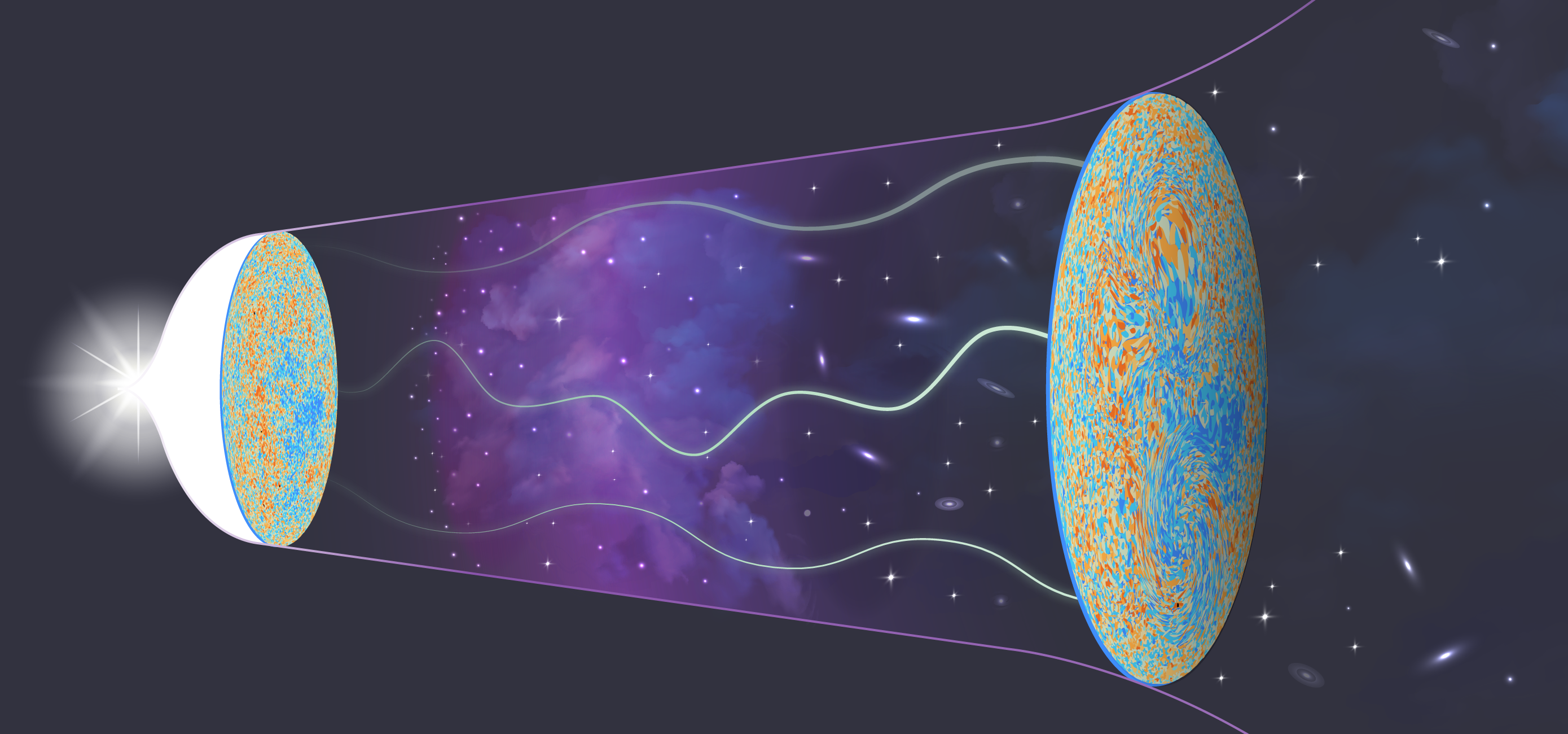A Detailed Map of Dark Matter, Revealed
Research led by the Atacama Cosmology Telescope collaboration maps the universe’s cosmic growth, confirming Einstein’s theory of general relativity.
For millennia, humans have been fascinated by the mysteries of the cosmos. From ancient civilizations to modern-day astronomers, the allure of the starry sky has inspired countless quests to unravel the secrets of the universe.
Although models explaining the cosmos have existed for centuries, the field of cosmology—in which scientists employ quantitative methods to gain insights into the universe’s evolution and structure—is comparatively nascent. It was established in the early 20th century with the development of Albert Einstein’s theory of general relativity, which now serves as the basis for the standard model of cosmology.
Now, a set of papers submitted to The Astrophysical Journal by researchers from the Atacama Cosmology Telescope (ACT) collaboration has revealed a groundbreaking new image that shows the most detailed map of matter distributed across a quarter of the entire sky, reaching deep into the cosmos. It confirms Einstein’s theory about how massive structures grow and bend light, with a test that spans the entire age of the universe.
“We’ve made a new mass map using distortions of light left over from the Big Bang,” says Mathew Madhavacheril, lead author of one of the papers and an assistant professor in the Department of Physics and Astronomy. “Remarkably, it provides measurements that show that both the ‘lumpiness’ of the universe and the rate at which it is growing after 14 billion years of evolution are just what you’d expect from our standard model of cosmology.”
The authors attribute the lumpiness quality to the uneven distribution of dark matter throughout the universe; its growth, they say, has remained consistent with earlier predictions. And, despite making up 85 percent of the universe and influencing its evolution, dark matter has been hard to detect because it doesn’t interact with light or other forms of electromagnetic radiation. As far as we know, dark matter only interacts with gravity.
Backed by National Science Foundation funding, Penn and Princeton University built the ACT and, in 2007, started observations to track down the elusive dark matter. The more than 160 collaborators who have since used the telescope, situated in the Chilean Andes, observe light that emanated following the dawn of the universe’s formation, the Big Bang—when the universe was only 380,000 years old. Cosmologists often refer to this diffuse light as the “baby picture of the universe,” but formally it is known as cosmic microwave background radiation (CMB).
The team tracks how the gravitational pull of large, heavy structures including dark matter warps the CMB on its 14-billion-year journey to us, like how a magnifying glass bends light as it passes through its lens.
“When we proposed this experiment in 2003, we had no idea the full extent of information that could be extracted from our telescope,” says Mark Devlin, Reese W. Flower Professor of Astronomy and Astrophysics and the deputy director of ACT. “We owe this to the cleverness of the theorists, the many people who built new instruments to make our telescope more sensitive, and the new analysis techniques our team came up with.”
Gary Bernstein, Reese W. Flower Professor of Astronomy and Astrophysics, and Bhuvnesh Jain, Walter H. and Leonore C. Annenberg Professor in the Natural Sciences, have led research mapping dark matter by using visible light emitted from relatively nearby galaxies as opposed to light from the CMB. “Interestingly, we found matter to be a little less lumpy than the simplest theory predicts,” Jain says. “However, Mark and Mathew’s beautiful work on the CMB agrees perfectly with the theory.”
ACT, which operated for 15 years, was decommissioned in September 2022. Nevertheless, the team expects to submit more papers presenting results from the final observations soon, and starting in 2024, the Simons Observatory will conduct future observations at the same site, with a new telescope capable of mapping the sky almost 10 times faster than ACT. For more about the work, click here.




